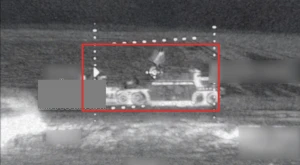
Hungary admits it deployed "some military forces" along Ukraine's western border in February 2022
Before Russia's invasion of Ukraine, Hungary had deployed some military forces along Ukraine's western border, but not to participate in the attack, but to control the situation on the border
Hungarian military expert András Rácz, who then worked at the Center for Strategic Studies and Security of the Hungarian government, told this in an interview with European Pravda, Espreso reports.
According to him, in February 2022, Hungary did indeed assemble "certain military forces" near the border with Ukraine, but the composition of these forces was not the same as on the Russian side.
"Russia has assembled offensive forces. The Hungarian forces that were sent to your border shortly before the Russian invasion were not offensive," Rácz said.
He noted that it was a "plan B" in case of a Russian invasion, which assumed that a massive humanitarian crisis would begin and a large-scale flow of refugees from Ukraine would follow. Therefore, it would have been necessary to provide them with tents, doctors, beds, food, and other things - all of which could have been done by the relevant army units.
The Hungarian authorities were also afraid of armed groups entering Hungary, as they did during the breakup of Yugoslavia.
As for the pontoons that were assembled along the border, Rácz explained: "The reason for the presence of pontoons is that Hungary was preparing for a possible Russian attack on bridges, including the Chop-Záhony bridge, where there is one of the key border crossings. Therefore, there were plans that if Russia destroys the bridge, the Hungarians, together with the Ukrainian side, could quickly build a crossing over the Tisza to allow refugees to cross it."
The expert emphasized that the Ukrainian side was aware of all these actions, and there was even coordination between Budapest and Kyiv.
"At the time, there was no question of a possible attack on Ukraine. We did not send any offensive equipment to the border at all. There were no tanks, no artillery, no ammunition and no supply logistics necessary for any attack," Rácz summarized.
- News














































